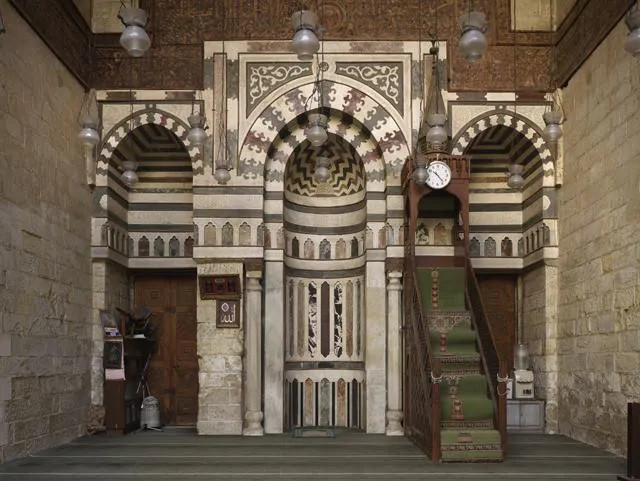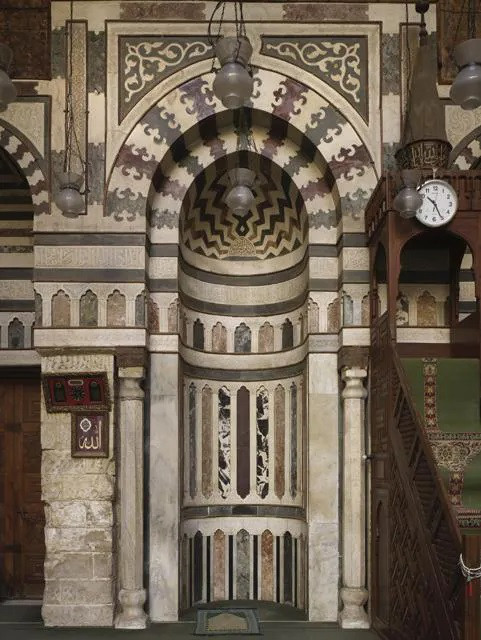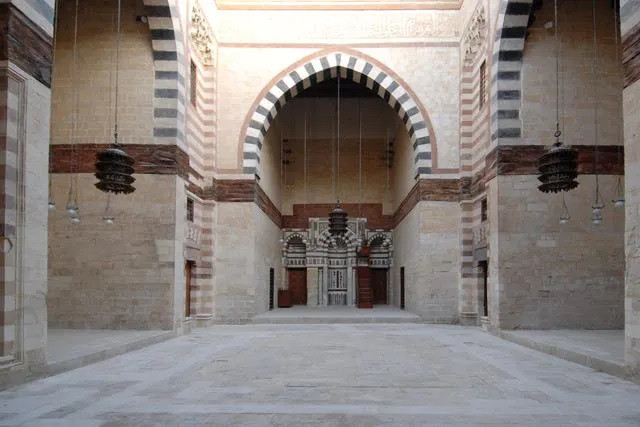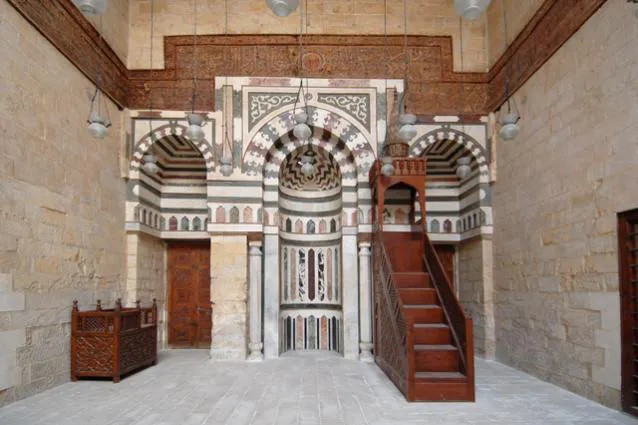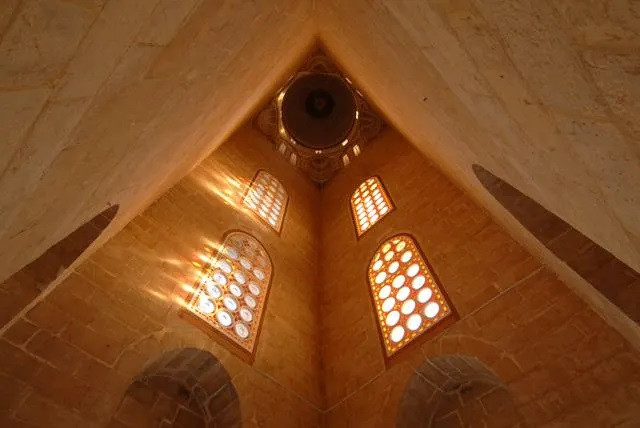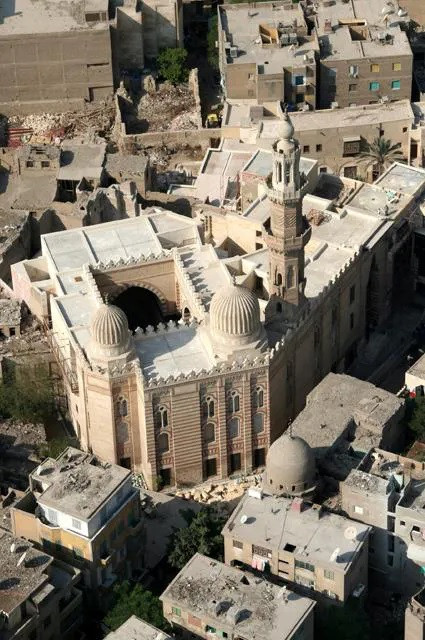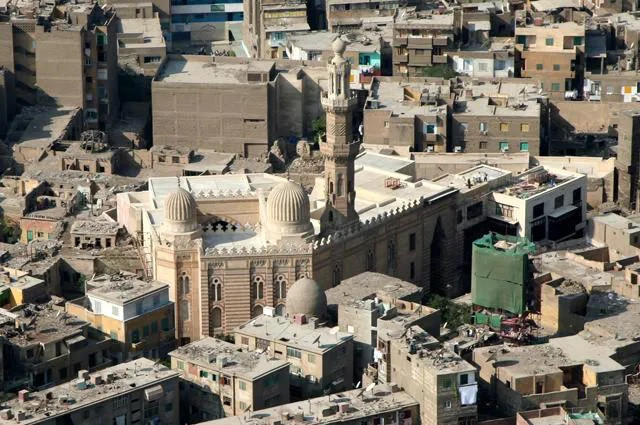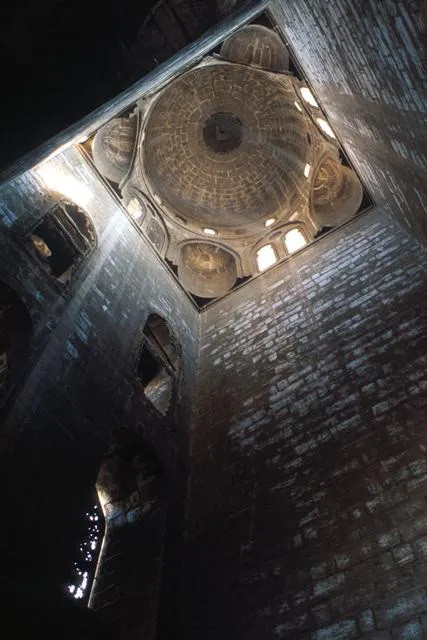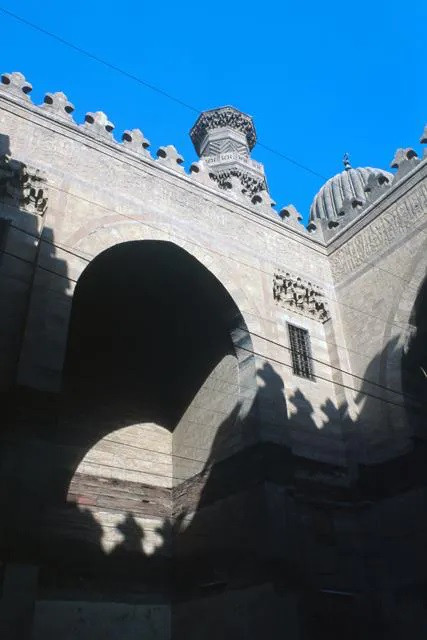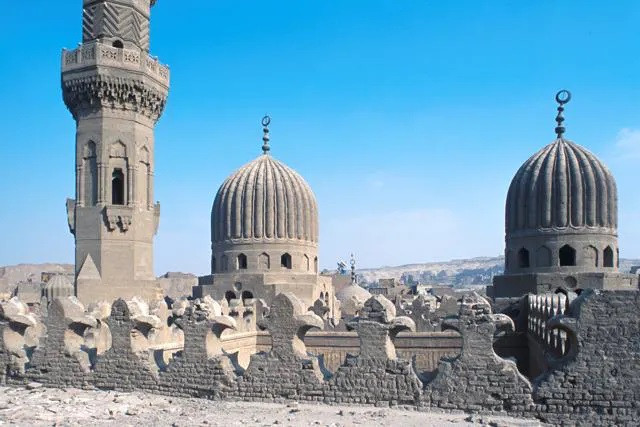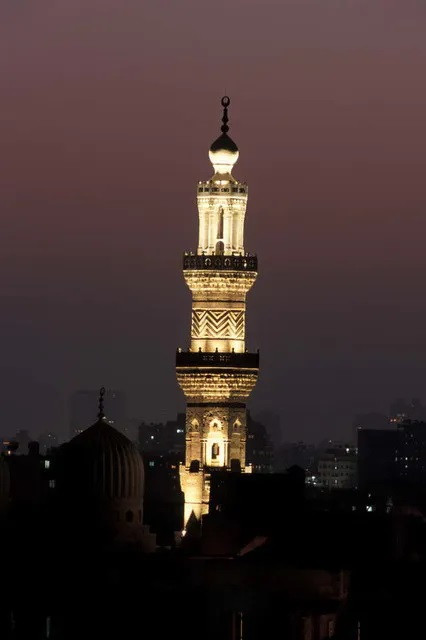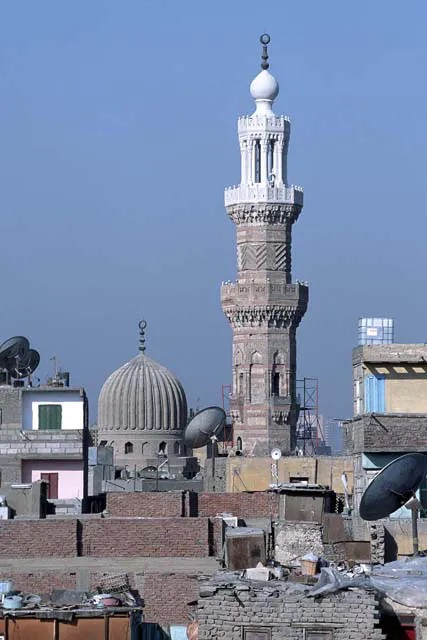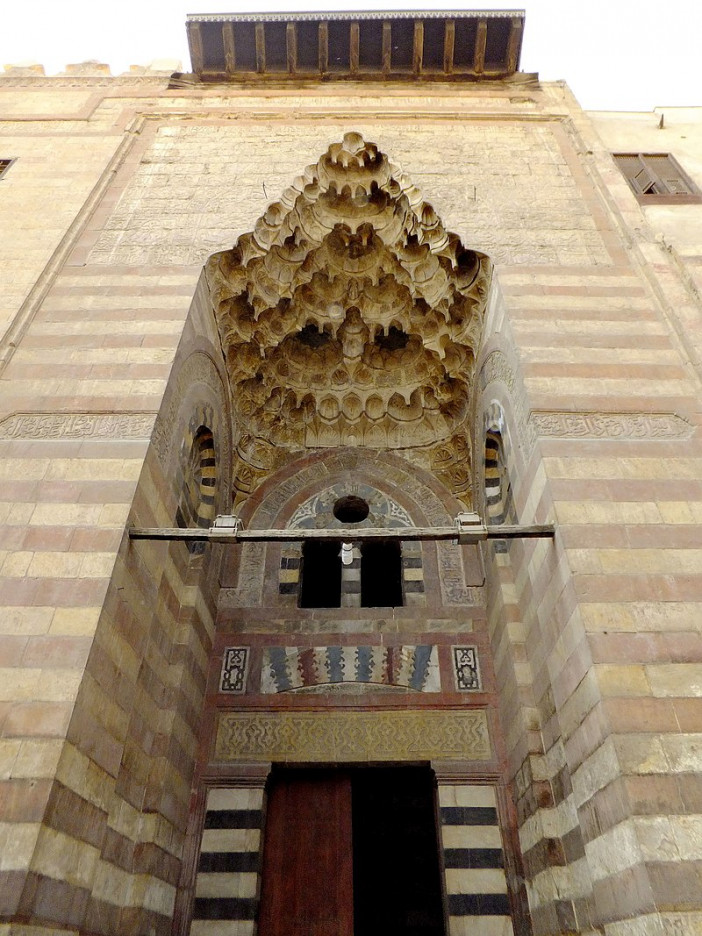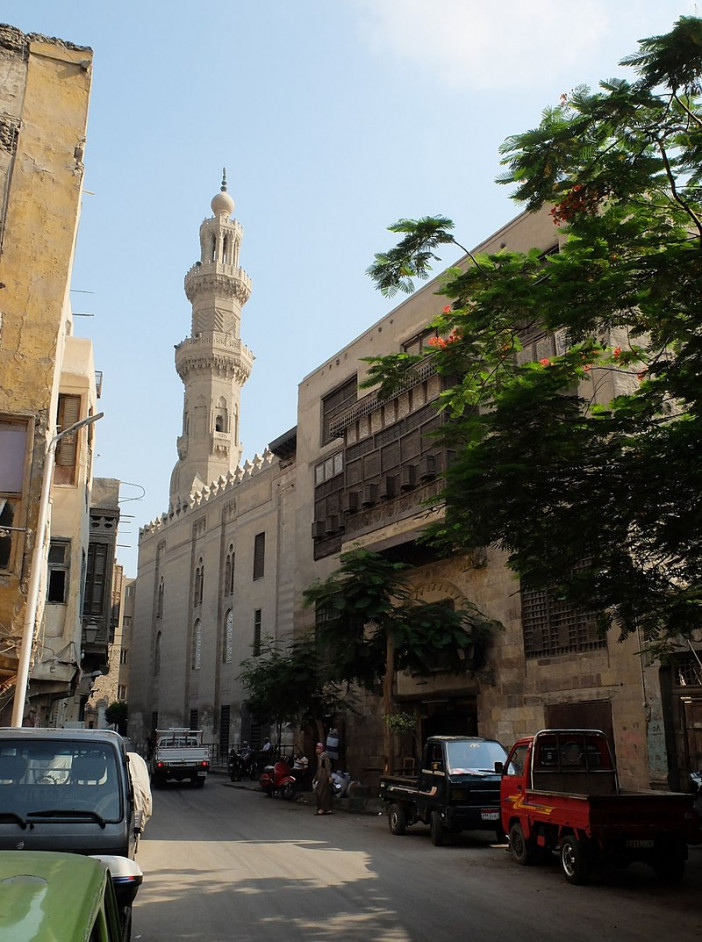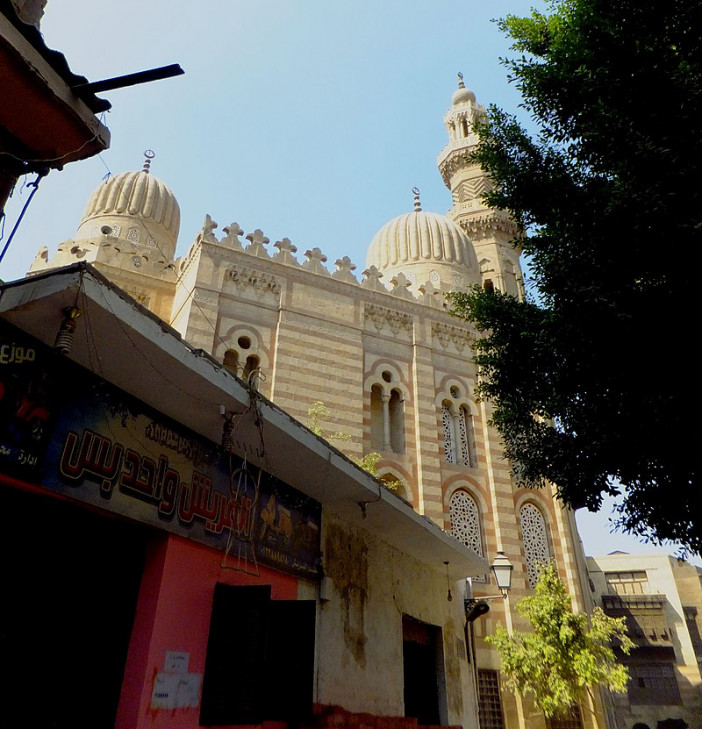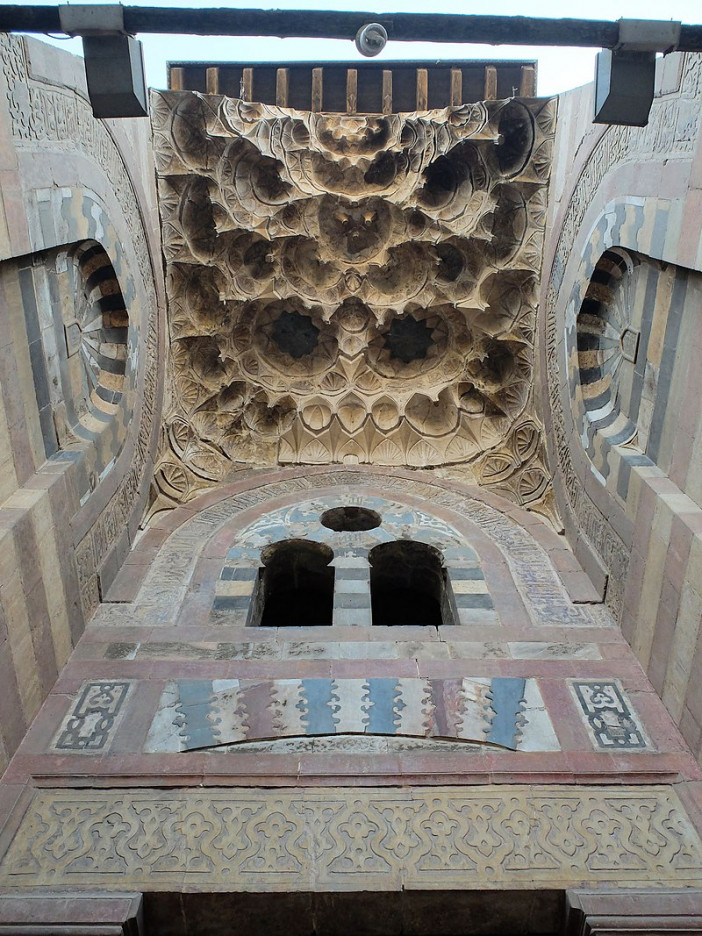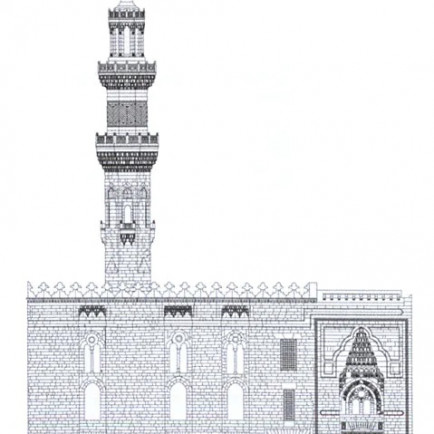Umm al-Sultan Sha'ban Mosque and Madrasa
History
In the Al-Darb al-Ahmar neighborhood of Islamic Cairo in Egypt, there is a Mamluk-era complex called the Madrasa of Umm al-Sultan Sha'ban. It was established or constructed in 1368–1369 CE (770 AH) at Sultan al–Ashraf Sha'ban's command in memory of his mother, Khawand Baraka (also known as Umm al–Sultan Sha'ban). It is situated north of the Bayt al-Razzaz palace along al-Tabbana street, outside of Bab Zuweila. The compound includes a primary school, water trough (hawd), mausoleum, and college (madrasa) (maktab).
Urban and Architectural
The structure's general layout is centered on two dome-topped tomb chambers and a central courtyard.
The complex's location at the intersection of the major street (Tabbana street, which is a continuation of al-Darb al-Ahmar street) and a little side street joining it at an angle makes for an interesting layout. In order to address this, the complex's floor plan forms a three-sided façade around this corner. A modest side entrance to the madrasa once existed on the western side, but the grand main entrance is located at the northern end of the eastern façade. In keeping with the two tomb chambers inside, the complex has two domes.
In more recent centuries, the top of the octagonal minaret crumbled or was damaged, but in the most current repair, finished in 2007, it was rebuilt using pictures of the original one. The building's outside walls are tall and formidable (around 18 meters high). Given that some of the windows—on the left, overlapping with the eastern iwan inside—are blind (i.e. blocked) and function only as decorative elements, the triple windows towards its upper portions are partially ornamental.
Description
A long stone-vaulted passageway with the madrasa and its central courtyard on the left and several annexes on the right is reached by the entrance gate. These annex rooms are a part of a group of rooms that are spread across three levels and are placed in the complex's outside regions, around the madrasa courtyard. These contained housing accommodations for the students as well as staff service rooms.
The madrasa's main courtyard is rectangular and is encircled by cruciform-shaped iwans on all four sides. Iwans that are aligned with the direction of prayer, or along the qibla axis, are larger than those that are transverse. A verse from the Quran is inscribed in a massive inscription that runs along the top of the courtyard's walls, above the iwan apertures.
References
https://www.archnet.org/sites/5785
https://en.wikipedia.org/wiki/Madrasa_of_Umm_al-Sultan_Sha'ban
Details
Location
27P5+RWW Mosque and Madrassa of Umm Sultan Sha'aban, Mazhar Ln, El-Darb El-Ahmar, Cairo Governorate 4292402, Egypt
Worshippers
1000
Owners
Sultan al-Ashraf Sha'ban
Year of Build
1368-69
Area
2000
Drawings
Map
History
In the Al-Darb al-Ahmar neighborhood of Islamic Cairo in Egypt, there is a Mamluk-era complex called the Madrasa of Umm al-Sultan Sha'ban. It was established or constructed in 1368–1369 CE (770 AH) at Sultan al–Ashraf Sha'ban's command in memory of his mother, Khawand Baraka (also known as Umm al–Sultan Sha'ban). It is situated north of the Bayt al-Razzaz palace along al-Tabbana street, outside of Bab Zuweila. The compound includes a primary school, water trough (hawd), mausoleum, and college (madrasa) (maktab).
Urban and Architectural
The structure's general layout is centered on two dome-topped tomb chambers and a central courtyard.
The complex's location at the intersection of the major street (Tabbana street, which is a continuation of al-Darb al-Ahmar street) and a little side street joining it at an angle makes for an interesting layout. In order to address this, the complex's floor plan forms a three-sided façade around this corner. A modest side entrance to the madrasa once existed on the western side, but the grand main entrance is located at the northern end of the eastern façade. In keeping with the two tomb chambers inside, the complex has two domes.
In more recent centuries, the top of the octagonal minaret crumbled or was damaged, but in the most current repair, finished in 2007, it was rebuilt using pictures of the original one. The building's outside walls are tall and formidable (around 18 meters high). Given that some of the windows—on the left, overlapping with the eastern iwan inside—are blind (i.e. blocked) and function only as decorative elements, the triple windows towards its upper portions are partially ornamental.
Description
A long stone-vaulted passageway with the madrasa and its central courtyard on the left and several annexes on the right is reached by the entrance gate. These annex rooms are a part of a group of rooms that are spread across three levels and are placed in the complex's outside regions, around the madrasa courtyard. These contained housing accommodations for the students as well as staff service rooms.
The madrasa's main courtyard is rectangular and is encircled by cruciform-shaped iwans on all four sides. Iwans that are aligned with the direction of prayer, or along the qibla axis, are larger than those that are transverse. A verse from the Quran is inscribed in a massive inscription that runs along the top of the courtyard's walls, above the iwan apertures.


